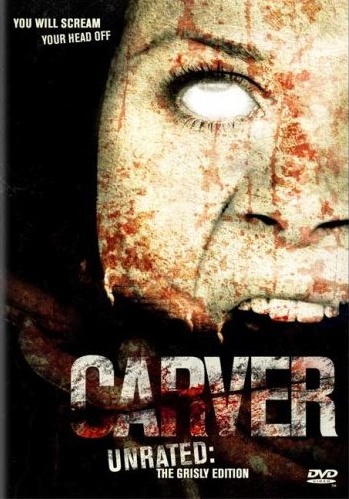 Looking to find something I hadn’t heard of that would be both fun and easy to watch, I picked out Carver, an independent horror film brought to us by Franklin Guerrero Jr., who also made the earlier horror/camping movie, The 8th Plague. As you might have guessed, this features a bunch of young folks going on a camping trip, and it supposedly “based on a true story”. But before we get into that, we get a taste of things to come! The movie starts right off with some hokey country music and a bruised and battered girl in her skivvies girl being held hostage in a filthy room by some fat guy with a funny goggled helmet and a saw… Of course, she doesn’t make it through the scene and we learn that this movie is going to be pretty gritty with a lot of gruesome bloodiness being inflicted on folks.
Looking to find something I hadn’t heard of that would be both fun and easy to watch, I picked out Carver, an independent horror film brought to us by Franklin Guerrero Jr., who also made the earlier horror/camping movie, The 8th Plague. As you might have guessed, this features a bunch of young folks going on a camping trip, and it supposedly “based on a true story”. But before we get into that, we get a taste of things to come! The movie starts right off with some hokey country music and a bruised and battered girl in her skivvies girl being held hostage in a filthy room by some fat guy with a funny goggled helmet and a saw… Of course, she doesn’t make it through the scene and we learn that this movie is going to be pretty gritty with a lot of gruesome bloodiness being inflicted on folks.
But back to our heroes. They meet up at a creepy hillbilly restaurant (or a maybe just a restaurant with a creepy hillbilly in it…) and things don’t look good from here. By which, I mean the movie. The beginning is filled with a seemingly endless “creepy” industrial score in the background that does nothing to establish any kind of atmosphere, it’s just overly dramatic and annoying and then the soundtrack songs are terrible pop, like grunge-lite mixed with singer-songwriter pap. It’s actually fairly annoying at first, though it does stop bothering me after a while, for the most part. And the characters we’re following are all quite unsympathetic. Well, a couple of them might be okay, but the rest are jerks.
Right off, I’m not expecting much, another one of those quick-edit, overly gory cheapos that really seem to be all too common these days. Slasher films in the opposite vein of classics like ‘Chain Saw, which were about atmosphere and being scary (and hence, stays around and scary for thirty years), instead of just piling on ridiculous mountains of gross scenes that only standout in how unscary they are and how much fake blood they use.
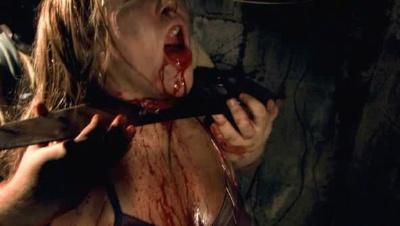
But after sitting through the first half hour or so, I actually took a liking to this one. Two brothers, Bobby Shaw and Billy Hall have their little restaurant and some side hobbies, you know, not too many strangers come around these parts. And though we find out early on that the local sheriff is thinking their hobbies may be going too far, the campers sort of befriend Billy Hall before heading off to their nearby camping site. Upon arrival, our hapless heroes encounter another camper who seems to have lost her camping partner, and they all set off together to move some stuff out of a shed as a favor for the limping Billy Hall. While getting his stuff together, they stumble on a little collection of film reels that look to be slasher films… Of course, they decided to watch them and while they do seem to be slasher films, they also have an all-too-gritty feel about them.
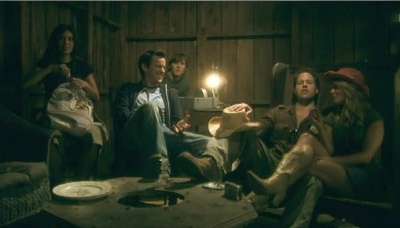
They don’t really take the hint that there may be something bad in them their hills, ever when one of them swears that he finds a building that was the backdrop in one of the movies, and even though the other campers friend never seems to get back to camp. The movie is pretty standard in all the way that you would expect these films to be, but I found it more entertaining than most, the gore was quite good and there certainly are some hard to watch scenes, including eye-gouging, nails to the knees, sledgehammers to the… Well, sledgehammer to everything. But the “pliers vs testicles” scene, well… Need I say more? The gore gets fairly explicit, but remains well done.
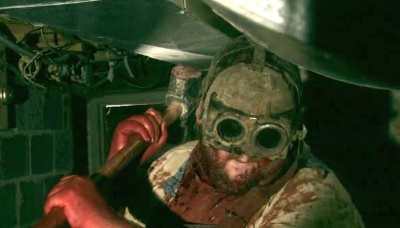
All in all, though it took me a little while to come to terms with some atmospheric weaknesses, I would say that this is certainly a watchable, gory funfest, in fact, I think it’s quite worth re-watching.
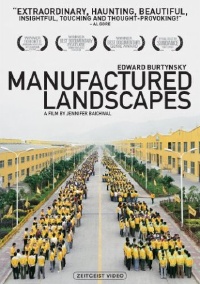 It’s been a quiet week for movies. There just don’t seem to have been many good chances to watch anything. Last night though, we watched a nice documentary called Manufactured Landscapes. Billed as “following around a photographer who focuses on landscapes showing the human effects on nature” or something like that, it wasn’t at all what I would have expected from such an idea. Yes, the photographer (Edward Burtynsky) is being followed around by a film crew as he takes his pictures, but for the most part they are pictures of man-made landscapes. Seemingly, he started in this direction by shooting landscapes that have been changed by man: strip mines, granite quarries and such, and we are shown some of that, but the work documented in this film is more of purely human spaces. Somehow he managed to get great government co-operation, as most of this is filmed in China and Asia, where we are taken to factories, recycling pits, shipyards, the construction site of the Three Gorges dam (and the deconstruction that had to occur for its construction) and the famous ship dismantling beaches of Bangladesh. Though he makes a comment about not having a direct message, instead using the photographs to make people come to their own conclusions, you can’t help but receive a message of human waste and over-consumption as we slowly pan through a vast building as hundreds of workers hand assemble all of these “made in china” goods, the mountains of old tires, computer parts and metal debris that are being “recycled”, we see the shipyards where tankers are built, and the surreal beaches where they are hand disassembled at the ends of their lives.
It’s been a quiet week for movies. There just don’t seem to have been many good chances to watch anything. Last night though, we watched a nice documentary called Manufactured Landscapes. Billed as “following around a photographer who focuses on landscapes showing the human effects on nature” or something like that, it wasn’t at all what I would have expected from such an idea. Yes, the photographer (Edward Burtynsky) is being followed around by a film crew as he takes his pictures, but for the most part they are pictures of man-made landscapes. Seemingly, he started in this direction by shooting landscapes that have been changed by man: strip mines, granite quarries and such, and we are shown some of that, but the work documented in this film is more of purely human spaces. Somehow he managed to get great government co-operation, as most of this is filmed in China and Asia, where we are taken to factories, recycling pits, shipyards, the construction site of the Three Gorges dam (and the deconstruction that had to occur for its construction) and the famous ship dismantling beaches of Bangladesh. Though he makes a comment about not having a direct message, instead using the photographs to make people come to their own conclusions, you can’t help but receive a message of human waste and over-consumption as we slowly pan through a vast building as hundreds of workers hand assemble all of these “made in china” goods, the mountains of old tires, computer parts and metal debris that are being “recycled”, we see the shipyards where tankers are built, and the surreal beaches where they are hand disassembled at the ends of their lives.
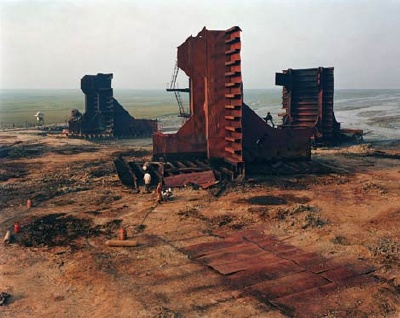
Including some glimpses into the lives of those who engage in these occupations (and some interviews) it gives you a fairly thorough picture of the backside of Western Consumerism. As I have always thought, say when looking at the F&#$ You Santa Claus that someone once gave me, “What do these workers in China think of this garbage that they have to assemble and what do they think that the people who create a demand for it must be like?”. In some respects, it can’t help but be viewed as a somewhat critical light on China and the consumption of energy and materials they use, within a seemingly complete lack of environmental regulations. But what it really brings to the fore is the relentless consumption of material crap that the West uses, the long, destructive and wasteful path that those items take to our cupboards, and then out our backdoors to “recycling” and refuse dumps and the terrible toll it takes on the world. But the photography (both film and still) is beautiful, engaging and thought inspiring and whatever conclusions they may bring you to are quite relevant.









